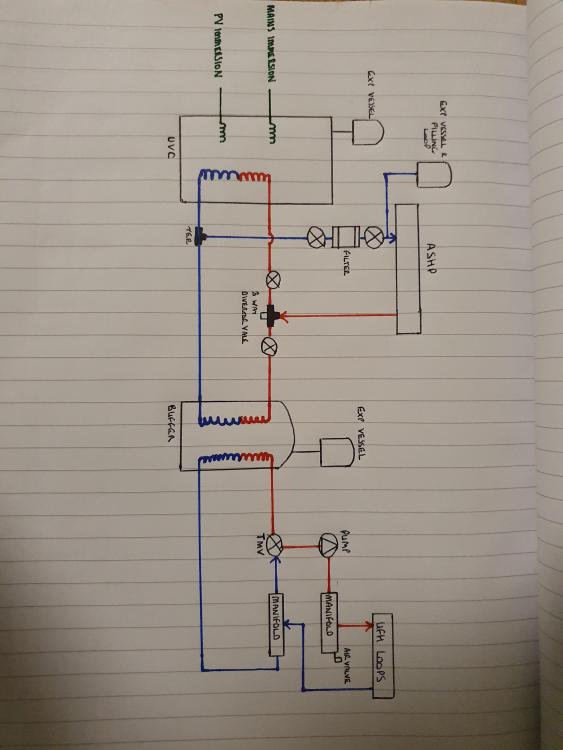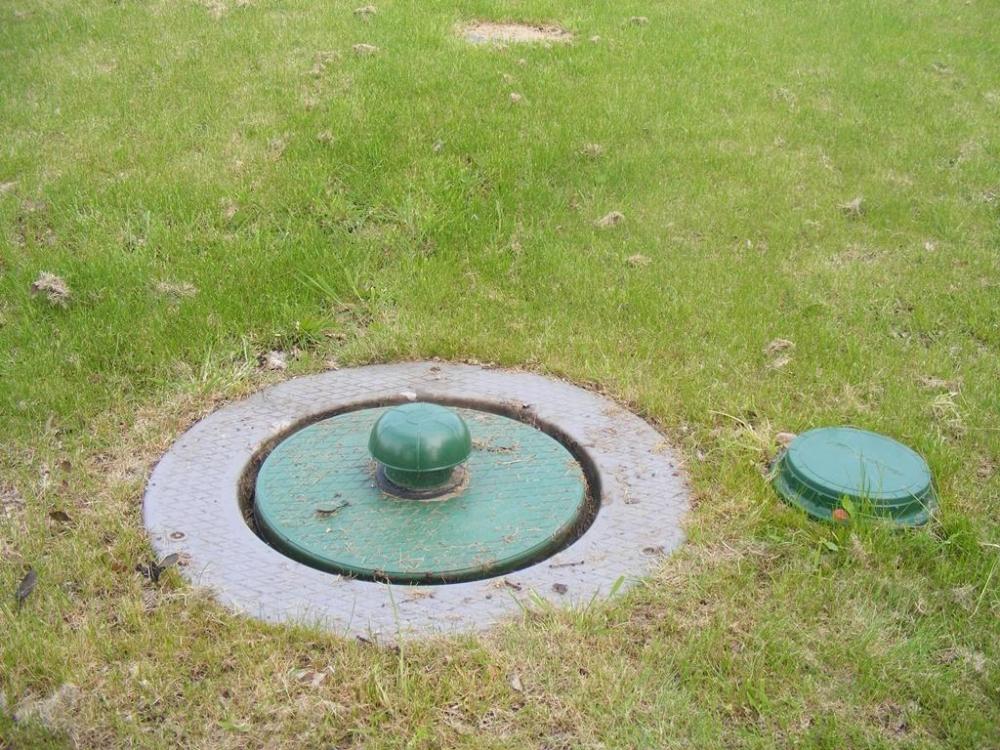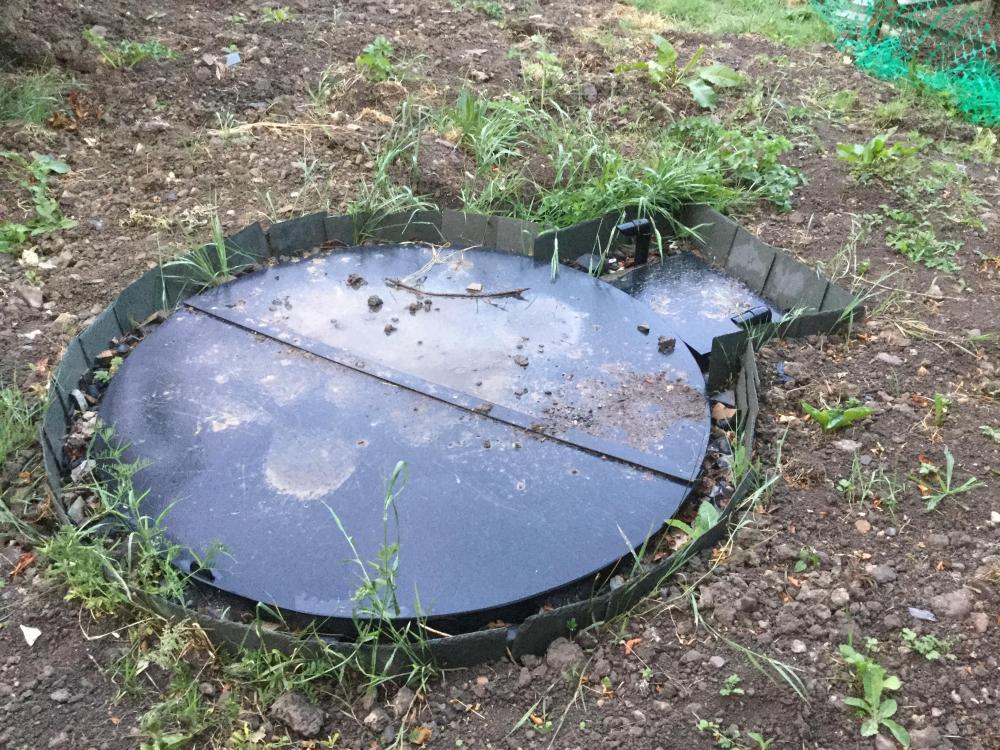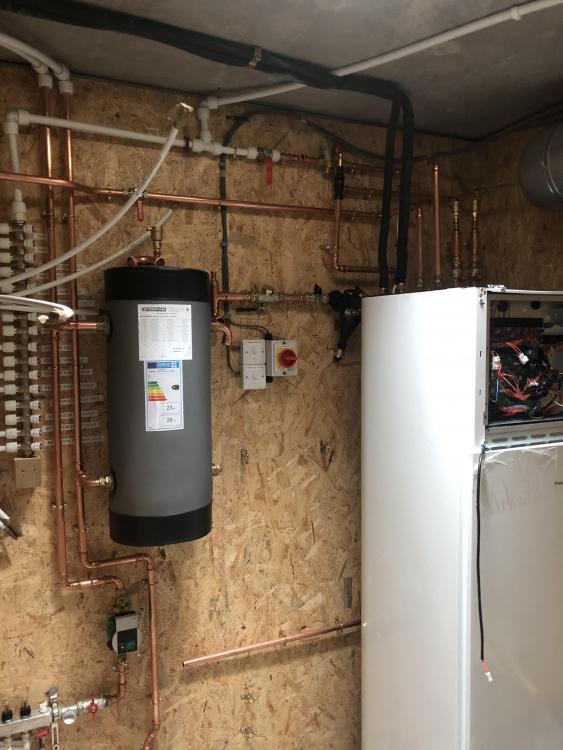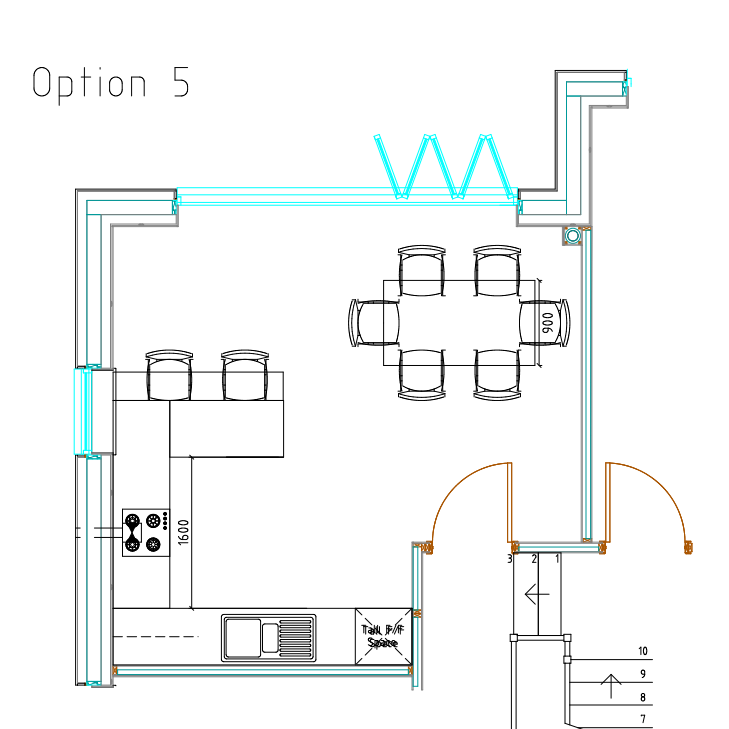Leaderboard
Popular Content
Showing content with the highest reputation on 09/28/20 in all areas
-
2 points
-
Insulated pipework can sort this. Not that expensive tbh in the scheme of things.1 point
-
It can't be that close to your back door, building regs set a minimum distance to a building. when first powered up part of the casing buzzed with the pump running. I forget the details, but I had to add a few screws here and there to stop adjacent parts "buzzing" together, and I found a big bit of rigid foam to stand the pump on. Now it's just the quiet purr of the pump. The top of that vent regularly gets knocked off by the mower, it just pops back on.1 point
-
Not sure where you bought it from unless you have a PA Cert..? Most of the ag merchants now ask as a matter of course for your certificate. A lot of the stuff on eBay is either knock off and diluted, or they give the warnings that you have to follow FEPA / COPR which clearly states that Grazon is Triclopyr and Clopyralid and should only be used professionally.1 point
-
2 bar is plenty, that won't make a difference. What you need to do is adjust the flow meters. Pop the red plastic cap off and the flow meters will rotate in their housing to adjust the flow rate. What you want to do is speed up the flow rate to rooms that take a long time to warm up, and slow down the flow rate to the rooms that heat up quickly. Be careful, if you unscrew them too far they will come out then things get a bit wet!!!! I don't know if all zones were on when you took the picture but some are flowing at a good rate (flow meter well down) and others hardly at all (flow meter well up) Your temperature is somewhat high, you don't normally need to run UFH at > 60 degrees. You adjust the temperature with the knob below the pump.1 point
-
We paid our builder in arrears not in advance. On one occasion he asked for help with his cash flow and I agreed to pay him in advance for our windows. I paid the amount the window co had quoted less VAT because I couldn't reclaim it. We had a pretty good relationship and I never had any concerns about him. If I had I would have paid the window co direct. We had agreed a %5 retainer and deducted that from each stage payment rather than the whole 5% from the last one. At least twice our builder proposed changes that were going to cost more. Easy time we asked him to formally write to us ammending the quote before agreeing them. Both times his proposals were a good idea. Example, adding a velux to a store room in the roof space.1 point
-
i agree the right wall is not well used, but I don't see the appeal of them, it would makes me feel like i was in a cafe or curry house, and hate the fact i couldn't adjust my seating arrangement without moving the table. Though this caught my eye in google images.1 point
-
That’s just not good enough, they have put their pipes in front of your nice manifold labels ?????1 point
-
1 point
-
We have the WPL Diamond DMS2 which was installed in 2010 and hasn't been any bother. The original Secoh EL100 air pump packed up in August this year so had a good life and was replaced with the newer JDK100 which uses less electricity.1 point
-
Very pleased with the conder. Easy to fit as it has 3 legs that it sits on while you pour the concrete. The blower pump sits inside a box in the top of the unit (though I see no reason why you could not remote mount it) and that box is only for the blower pump. There is a separate cap you remove to give access for pumping out. (I understand the Biopure requires you to lift out the blower pump box for pump out access) This is the finished thing, this is all you see. the big round lid gives access to the blower pump and the small round lid unscrews to give access for the pump out pipe.1 point
-
I went for the vortex in the end, the pump and controller came in a box to be fixed to the lid but it was sooo noisy as the lid acted as a drum. I moved the box into a hole in the ground next to the tank with a stone drain down to the rumble drain so it would not get flooded out. It’s whisper quiet now and less obtrusive being below ground level.1 point
-
Largely depends on how much insulation is under the UFH, and how energy efficient the rest of the house is. If you solve both those you can have as thick carpet as you like and the heat will eventually come into the house and stay there, as it has no where else to go. Caveat being very slow response times (as is common anyway in high thermal mass, high efficiency builds). If you have insufficient insulation under, or have a high heating demand because the rest of the house is inefficient or drafty, then the carpet is just yet another impediment in the way of the heat getting out of the pipes and into where you want it as fast as possible.1 point
-
I have carpet on a living room and two bedrooms. As above all have suitable underlay and carpet that are meant for ufh with low tog ratings. The heat still comes through but it doesn't feel the same underfoot as a solid floor would.1 point
-
I suppose the correct thing to do would be not to fit carpet as to ensure you get the maximum benefit from the UFH - But, things like personal taste etc., come into the equation which makes decision making that bit more difficult. We too enjoy having carpet down and we have done so, in the sitting room and bedrooms - all of which have UFH heating fitted. We chose an underlay and carpet with fairly low TOG values in order for them to "work" with the UFH as opposed to working against it. I have to say we do not feel we have suffered as a result. The rooms are warm enough and I suppose it just underlines that such things as UFH, Floor coverings etc. need to be considered in the whole, together with a well insulated house, which is either air tight or fairly airtight.1 point
-
1 point
-
We used copper b press on heating installation from 2005 onwards for the local council jobs (gas pipe where still soldered although you can get copper press fit for that aswell). Then we picked up second hand machines on German ebay (ebay.de) for a few hundred euros. The heads only fit one size and type of fitting so we needed 4 heads 15&22 mm copper and 16 & 20mm uponor. Cracking system. New machine approx £800 plus £80 for each head now.1 point
-
1 point
-
yes its the only eating area, and a lot more fiddling needed to make it work. What do you mean by the sink waste? i am not sure what you mean catered for? i was just looking to pipe it out of an external wall, or does it need a bigger service void to run to the rear of the cabinets? Thanks for the input and it is fair to say that the island is a step to far, next up looking at putting a breakfast bar in and curling the kitchen round, some floor space borrowed from the bedroom beneath and breakfast bar (300mm) to the back of base units. This seems to work a bit better. Further feedback would be welcome1 point
-
That's what I've got in the back of my mind, but will approach him a but more open in the first instance asking for advice. To be honest I'd be surprised if he didn't offer to sort it.1 point
-
Re the noise thing. I wanted to avoid a split unit for 2 reasons, first is it requires an F Gas engineer to leak test and gas the system making DIY install not possible, but second the noise of an internal compressor. Why would you choose to put a noise source inside the house when it can be outside in a monoblock unit? The only noise we suffer is the water circulating pumps, which in spite of being one Grundfoss and 2 Wilo pumps are still audible as a low level hum, but you would get that with any wet heating system. It was a lot worse before I changed the "no name" UFH pumps for Wilo ones.1 point
-
sorry @joth should’ve been clearer. Both basement slab and ground floor slab are 200mm concrete and both actually have 120mm rigid insulation board then UFH and flooring on top.1 point
-
On the assumption you don't have UFH pipes under the ASHP, couldn't he just drill into the slab later and resin fix 4 studs? Making damn sure if course he knows where the yet pipes are by measuring and writing down/photos beforehand?1 point
-
Is it a cold basement or do you have floor insulation under the basement slab too? Only 100mm insulation really isn't much to put under ufh, you'll find a lot of energy escapes downward into the basement1 point
-
Is this the only eating area? As others have said, you would need min 1000mm between the island and other run. You will be hurdling the dishwasher door as you have it. Options 2, 3 and 4 you cannot get to the folding doors unless you reverse them. This is worth a lot more fiddling with to make it work. Is the sink waste catered for?1 point
-
I ran my own Kitchen Company for 20+ years. 1000mm would be absolute minimum, and still a pain in the butt. I would normally design 1400mm for back to back working. 1200mm as a minimum. You might just get away with 1000, but you will find it a pain, and may well end up with a kitchen that looks cramped.1 point
-
Hello Gem77. Sorry to hear that things are not going smoothly at the moment. It might be worthwhile trying to seek out a Quantitity Surveyor who works up prices for local builders when they are tendering. I'm assuming you don't have a standard form of building contract, rather, that you have a contract that is written by the builder themselves, or some other form of non standard agreement. What you may look to do is to ascertain; the value of the work to date, whether the work that has been done complies with the drawings, if not what elements don't. Also look at what materials are on site, the value of these and whether they are the correct materials. Say you have some beams.. check the lengths, weights etc and that they will fit, insulation if any.. check the type / performance of any substitute type. To find a QS like this you may want to ask here or go back to your designer and ask them if they know of somebody local. This may be the hardest part... to find a QS who can help you. You may need to pay say £ 500 - £750 (depends on the size of the project though) for someone to do a rough appraisal. The main thing is that it will give you a better understanding of the true value of the work so far. Also, you'll get someone to lend you a friendly / supportive ear (well worth the money) and advise. QS's no doubt will be seeing more of this type of outcome so they may have the makings of a solution that works for you. Once you get a better handle on the money and values of work to date then you should be in a better postition to take a view. If you have a QS on tap they can often keep you right while sitting in the background to some extent. Another key point is to try and make sure the relationship you have with your builder does not break down completely, hard to do at times. A lot of QS's are quite good at weighing up the risks and to some extent they can act as an arbitor/ mediator, depends on who you can find. This can restore the relationship and bring a project back on track both in terms of programme and payment schedule. If this can't be done then at least you'll have an idea as to how much it will cost you to change horses before you decide to part company with your current builder. It may just a fact that the builder can't do the work for the price he quoted without a substantial loss (go bust) due to the extra cost for example of materials and complying with the COVID regulations. Other builders are probably in the same boat. Having a clear view as to the quality and value of the work to date is well worthwhile. All the best.1 point
-
get a pumped outlet version and you can have the unit at whatever level suits the house1 point
-
If you feel you are way behind on materials and labour you have paid for -- then now is the time to get it sorted --it will only get worse this pandemic could be a full lock down soon -and if your builder is in trouble then you will be last thing on his mind . he will pay his men at the end of the week --not the beginning before they have even turned up on monday morning ,which is what i think you are saying he is wanting you to do ,if its in arrears then no problem --just make sure it keeps in step1 point
-
I always prefer to do it. Id rather it leaked air than a load of water. I normally test at about 4bar. Higher than the crappy water pressure supplied to my house. I usually leave it for an hour.1 point
-
Crap installation of both the mag filter and the valve with handle before it. How are you supposed to get the mag unit off ..??0 points
-
0 points
-
0 points
-
You're talking to a man who cuts down old oil cans and heavy duty detergent bottles to make storage containers. Hell, there's even some rinsed out tuna/sardine/mackerel cans in use in my garage. Upcyling is king.0 points
-
@SKB I’ve seen that problem a few times over the years on my commercial projects and each time it happened it turned out to be an issue with a traditional sand cement screed which had been laid with insufficient water in the mix. When there’s insufficient water the chemical reaction can’t take place right through the thickness of the full screed depth so the surface typically forms a hard skin that is 10 - 20mm thick but the main body of the screed doesn’t cure and remains as a dry mix. The surface skin obviously can’t bond to the rest of the screed and it isn’t thick enough to take normal loads so eventually it starts to crack up just like your photo.0 points
-
We've currently an impromptu island in our kitchen in the form of a brand new washing machine we borrowed for a week when ours went wrong. The owner is in no rush to collect it. Amazing how much use this 600×600 area is getting used. Sanitised, phone, keys, wallet, shopping etc goes from being cleaned at the sink to the top of the wm before being redistributed. The FiL leans on it when he totters in. The best bit is it acts as a sort of roundabout in the kitchen to stop SWMBO and I getting in each other's way and cursing. If it doesn't go soon it might be getting a piece of worktop stuck on top!0 points
-
0 points



